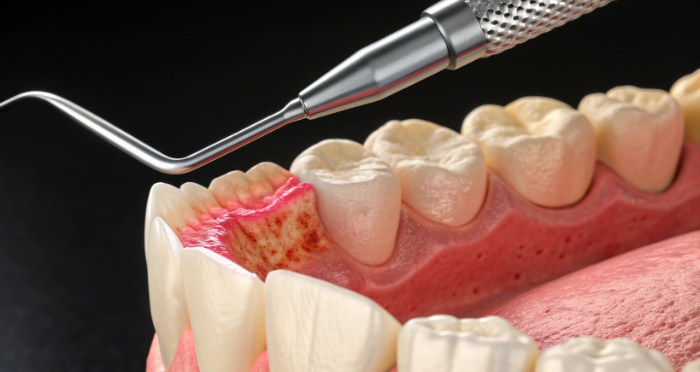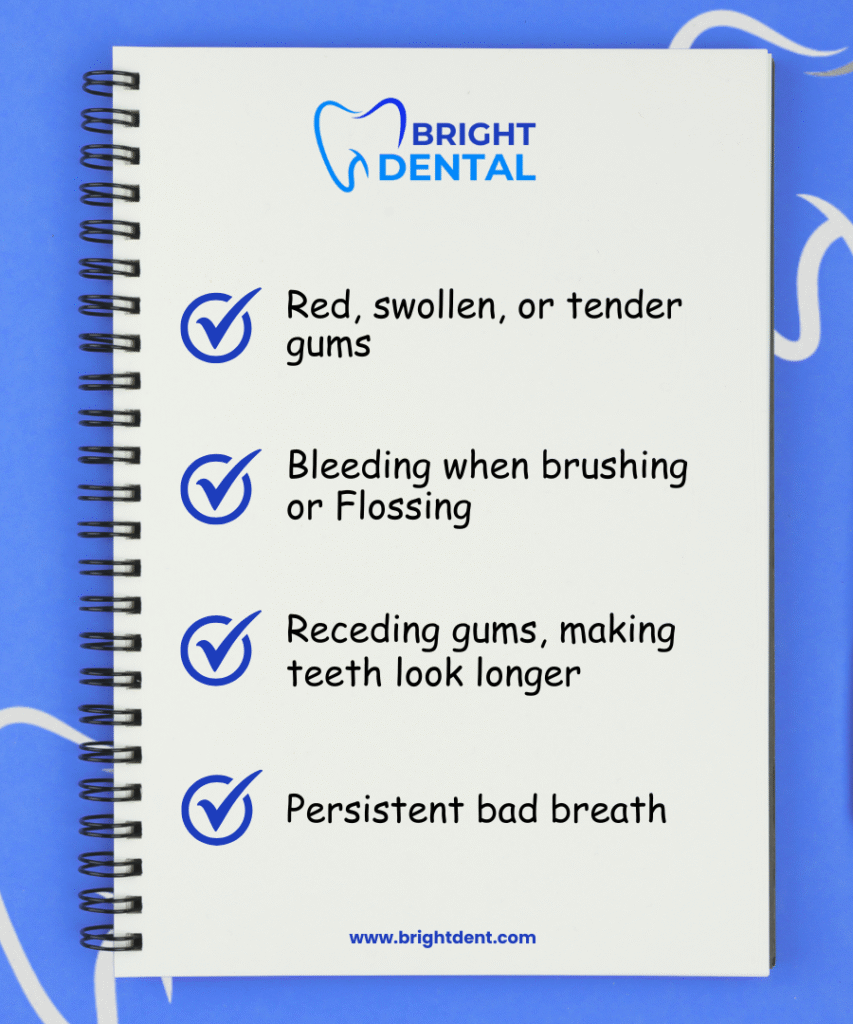
-
Posted By admin
-
-
Comments 0
The word “periodontitis” can sound intimidating, clinical, and perhaps a little frightening. But for the millions of adults who experience it, it’s a very real and pressing health concern. Often referred to as advanced gum disease, periodontitis is a serious infection that damages the soft tissue and, if left untreated, can destroy the bone that supports your teeth.
The good news? A diagnosis of periodontitis is not a life sentence for tooth loss. Modern dentistry offers a robust, multi-faceted arsenal of periodontitis treatment options designed to halt the disease’s progress, regenerate lost support, and restore your oral health. This guide will walk you through everything you need to know, from recognizing the early signs to understanding the intricate surgical procedures used for advanced cases.
Understanding Periodontitis – More Than Just “Pink in the Sink”
Before diving into treatments, it’s crucial to understand what we’re dealing with. Periodontitis doesn’t appear overnight. It almost always begins as gingivitis—the mildest form of gum disease, characterized by red, swollen gums that may bleed easily when you brush or floss. At this stage, the damage is reversible with good professional care and improved oral hygiene.
When gingivitis is left unchecked, it can advance to periodontitis. Here, the inner layer of the gum and bone pull away from the teeth, forming pockets. These small spaces between teeth and gums collect debris and can become infected. The body’s immune system fights the bacteria as the plaque spreads and grows below the gum line.
The bacterial toxins and the body’s natural response to infection start to break down the bone and connective tissue that hold teeth in place. As the disease progresses, the pockets deepen, destroying more gum tissue and bone. Eventually, teeth can become loose and may have to be removed.
Symptoms
- Bleeding Gums: The most common sign. Gums that bleed during and after brushing or flossing are not normal.
- Swollen, Tender, or Red Gums: Healthy gums are firm and pale pink.
- Persistent Bad Breath: A constant foul odor or a bad taste in your mouth that won’t go away.
- Receding Gums: Your teeth may appear longer than before, a sign that your gum tissue is pulling away.
- Pockets Between Teeth and Gums: This is typically measured by your dentist or hygienist.
- Loose or Shifting Teeth: As bone is lost, the support for your teeth diminishes.
- Pus: You might see pus between your teeth and gums, indicating a active infection.
- Changes in Your Bite: How your teeth fit together when you bite down may feel different.

Periodontitis Treatment Options: A Staged Approach
The primary goal of any periodontitis treatment is to control the infection. The type of treatment varies dramatically depending on the severity of the disease. Your dentist or periodontist will create a customized plan that may include one or a combination of the following approaches, ranging from non-surgical therapies that control bacterial growth to surgery to restore supportive tissues.
Think of it as a staircase. We always start on the first step, and only proceed to the next if necessary.
- Non-Surgical Treatments: The first and most fundamental line of defense. These procedures are minimally invasive and focus on cleaning the pockets around teeth to prevent damage to the surrounding bone.
- Surgical Treatments: If non-surgical methods are insufficient, especially in cases of advanced periodontitis, surgery becomes necessary to access and clean deeper areas and to repair and regenerate lost bone and gum tissue.

Surgical Treatments for Advanced Periodontitis
When inflammation and deep pockets remain following non-surgical treatment, surgery offers a way to:
- Reduce the depth of the periodontal pockets.
- Regenerate lost bone and tissue.
- Reshape damaged bone to make it easier to keep clean.
- Remove bacteria from hard-to-reach areas.
Modern periodontal surgery is precise and performed with your comfort in mind.
Flap Surgery (Pocket Reduction Surgery)
This is one of the most common surgical procedures for periodontitis. The goal is to gain direct access to the tooth roots and bone for a more effective cleaning.
- The Procedure: The gums are gently lifted back, creating a “flap.” This exposes the tooth roots and underlying bone, allowing the dentist or periodontist to perform a deep scaling and root planing, removing the inflamed tissue and thoroughly cleaning the area.
- Reshaping Bone: If the bone has been damaged, it can be contoured and smoothed to eliminate crevices where bacteria can thrive.
- Closing the Flap: After cleaning and contouring, the gum tissue is sutured back into place, now fitting more snugly around the teeth. This significantly reduces the pocket depth, making it much easier for you to clean and maintain.
Bone Grafting
When periodontitis has destroyed the bone surrounding the tooth root, a bone graft can help regenerate lost bone and prevent tooth loss.
- The Procedure: The graft material, which may be a small piece of your own bone, a donated bone, or a synthetic material, is placed in the area of bone loss.
- The Goal: This graft acts as a scaffolding, encouraging your body to regenerate its own bone over time. This procedure not only helps stabilize teeth but also provides a solid foundation for dental implants if a tooth cannot be saved.
Guided Tissue Regeneration (GTR)
Performed in conjunction with a bone graft, GTR encourages the regrowth of both bone and gum tissue.
- The Procedure: After a bone graft is placed, a special small piece of biocompatible fabric—a membrane—is inserted between the gum and the new bone.
- The Purpose: This membrane acts as a barrier. It prevents fast-growing gum tissue from growing into the area where the bone should be, allowing the slower-growing bone and ligament cells to regenerate and properly reattach to the tooth root.
Soft Tissue Grafts
Receding gums are a common symptom of periodontitis. A soft tissue graft can cover exposed roots, protect them from decay, and improve the aesthetics of your smile.
- The Procedure: A small amount of tissue is taken from the roof of your mouth (palate) or from a donor source and is stitched into place over the area of recession.
- The Benefits: This thickens the gum tissue, reduces further recession, and can dramatically improve tooth sensitivity.
Non-Surgical Treatments: The Foundation of Care
Non-surgical periodontitis treatment is always the initial recommended course of action. These procedures are highly effective for mild to moderate cases and are crucial for long-term maintenance after surgery.
Scaling and Root Planing (SRP): The Deep Clean
This is the gold standard non-surgical procedure for treating periodontitis. It’s a meticulous, two-part process performed under local anesthesia for your comfort.
- Scaling: Your dentist or hygienist will carefully remove plaque and tartar (calculus) from the tooth surfaces both above and, most importantly, below the gum line, all the way down to the bottom of the periodontal pocket.
- Root Planing: This is the crucial second step. The root surfaces of the teeth are smoothed out. Why? Rough spots on the root are ideal hiding places for bacteria. By creating a smooth, clean surface, it becomes more difficult for bacteria to cling on, and it allows the gum tissue to reattach to the tooth more effectively.
Scaling and root planing may require more than one visit and is often divided into sections of the mouth (quadrants). Following the procedure, you may experience some tenderness, but this is a small price to pay for halting the disease process.
Adjunctive Therapies
Sometimes, SRP is combined with other treatments to enhance its effectiveness.
- Antibiotics: To control bacterial infection, your dentist may recommend oral antibiotics or place topical antibiotics directly into the periodontal pockets after SRP. These can come in the form of gels, filaments, or microspheres that release medicine slowly over time.
- Antimicrobial Mouth Rinses: A prescription-strength antimicrobial mouthwash like chlorhexidine may be prescribed for a short period to help control bacteria and reduce inflammation during the healing phase.
The success of non-surgical therapy is typically re-evaluated in 4-6 weeks. Your dentist will re-measure your periodontal pockets. If the pockets have decreased and the gum health has improved, the only treatment needed moving forward is regular periodontal maintenance cleanings (usually every 3-4 months). If the deep pockets persist, a surgical periodontitis treatment may be recommended.
Frequently Asked Questions about Periodontitis Treatment
Is periodontitis treatment painful?
With modern local anesthetics and sedation options, periodontitis treatment is performed with minimal discomfort. You may feel some tenderness after the procedure, but this can be managed with over-the-counter pain relievers and usually subsides quickly.
What happens if I don’t get treatment?
Untreated periodontitis leads to the continued destruction of the bone and ligaments supporting your teeth, resulting in loose teeth and eventual tooth loss. Furthermore, the chronic inflammation is linked to serious systemic health issues like heart disease, diabetes, and respiratory problems.
How can I prevent periodontitis from coming back?
Prevention is centered on consistent, excellent oral hygiene: brushing twice daily, flossing every day, and attending regular dental cleanings and check-ups. For those who have been treated for periodontitis, more frequent “periodontal maintenance” visits (every 3-4 months) are essential.
Will my insurance cover it?

Many dental insurance plans provide some coverage for periodontal therapy, though the extent varies. It’s best to check with your provider. Our team at Bright Dental in Des Plaines, IL is always happy to help you understand your benefits.
Taking the Next Step Towards a Healthier Smile
A diagnosis of periodontitis can feel overwhelming, but it is a manageable condition. The journey from initial scaling to advanced surgery is a structured, evidence-based path designed to preserve your natural teeth and protect your overall health. The most important step is the first one: seeking professional care.
If you are in the Des Plaines, IL area and are experiencing any symptoms of gum disease, or if it’s simply time for your regular check-up, we encourage you to take action. The experienced and compassionate team at Bright Dental is dedicated to providing the highest standard of care, from preventive education to advanced periodontitis treatment.
Don’t let gum disease dictate the future of your smile. Contact Bright Dental in Des Plaines, IL today to schedule your consultation.


